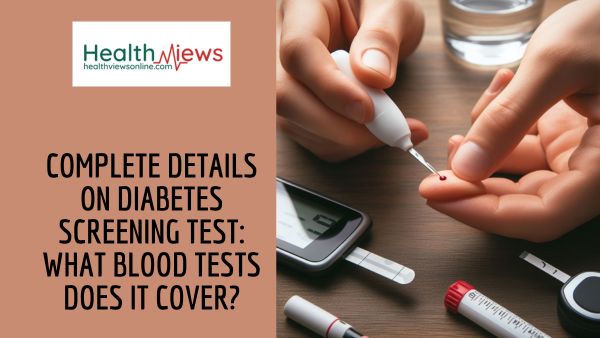What is a Diabetes screening test?
Diabetes, also known as diabetes mellitus, is a disorder that affects how your body uses glucose (blood sugar). Diabetes is diagnosed with a blood test that measures your blood glucose (sugar) levels. If you are at high risk of developing diabetes or are experiencing symptoms, your doctor may recommend you for a diabetes screening test. (Source)
Also, Read Know About DMIT: Science, Facts, Research, Uses, Applications
Here are the main blood tests covered in a diabetes screening test:
1. Fasting blood sugar (FBS)
The fasting blood sugar test measures how much sugar (glucose) is in your blood. It is a simple, safe, and commonly used approach for determining prediabetes, diabetes, and gestational diabetes.
What are the normal values of Fbs?
Between 70 and 100 mg/dL (3.9 and 5.6 mmol/L)
What does low Fbs indicate?
Hypoglycemia occurs when your blood sugar (glucose) level falls below the normal range. Hypoglycemia is usually connected with diabetes treatment.
What does high Fbs indicate?
Fasting blood sugar levels that are too high indicate insulin resistance or diabetes.
Also, Watch health views web stories: What Causes High Uric Acid
2. Oral Glucose Tolerance Test (OGTT)
Oral glucose tolerance tests (OGTT) are performed to assess the body’s ability to handle a greater amount of sugar.
What are the normal values of OGTT?
A blood sugar level of 140 mg/dL or below at 2 hours is considered normal.
What does low OGTT indicate?
A low OGTT level implies that you have prediabetes.
What does high OGTT indicate?
A Higher OGTT indicates you have diabetes.
3. Haemoglobin A1c (HbA1c)
A hemoglobin A1C (HbA1C) blood test determines your average blood sugar (glucose) level over the previous two to three months.
What are the normal values of HbA1c?
Below 5.7%
What does low HbA1c indicate?
A low HbA1c level (below the normal range) indicates that a person’s blood sugar levels have been lower than average for the preceding 2-3 months.
Also, Read Why Blood Donation is Important? Giving = Living
What does high HbA1c indicate?
A high HbA1c level (above the usual range) indicates that you experienced higher-than-average blood sugar levels in the last 2-3 months.
4. Glycated Albumin (GA)
Glycated albumin (GA) is a result of non-enzymatic glycation of albumin in the bloodstream.
What are the normal values of GA?
Less than 14%
What does low GA indicate?
A low GA level indicates that you have had lower-than-average blood sugar levels in the last few weeks. This could be due to variables such as proper blood sugar management, medications, or lifestyle changes.
What does high GA indicate?
A high GA level (above the normal range) indicates that your blood sugar levels have been higher than usual in the last few weeks. This shows poor blood sugar management and may indicate diabetes, uncontrolled diabetes, or the need for therapy changes.
5. Fructosamine Test
The fructosamine test is one method for estimating the amount of glucose in the blood of diabetics.
What are the normal values of Fructosamine?
200 to 285 umol/L
What does low Fructosamine indicate?
When total blood protein and/or albumin levels are low, fructosamine levels fall. Protein/albumin levels might fall as a result of a lack of protein in the diet.
What does high Fructosamine indicate?
High amounts of fructosamine indicate that high average blood glucose levels occurred in the previous two to three weeks.
6. C-Peptide Test
This test determines the concentration of C-peptide in a sample of your blood or urine (pee).
What are the normal values of C-Peptide?
0.5 to 2.0 nanograms per milliliter
What does low C-Peptide indicate?
These levels are low when your body produces less than it should.
What does high C-Peptide indicate?
When your body produces more insulin than usual, these levels can rise.
7. Insulin Test
An insulin-in-blood test determines the quantity of insulin in a blood sample.
What are the normal values of Insulin?
Between 5 and 15 µU/mL
What does low Insulin indicate?
If your insulin level is low and your blood glucose level is high, it may indicate that your pancreas is unable to produce enough insulin. Type 1 diabetes and pancreatitis are two possible reasons.
What does high Insulin indicate?
Hyperinsulinemia occurs when the amount of insulin in the blood exceeds what is considered normal.
Knowing that having a high or low blood sugar does not always indicate that you have a medical condition that requires care. Approximately one in every twenty healthy adults will have results that are outside of the normal range. Your healthcare professional will inform you if additional tests are required to discover the reason for the abnormal level.
Also, Watch health views web stories: 10 Foods to Boost Haemoglobin





